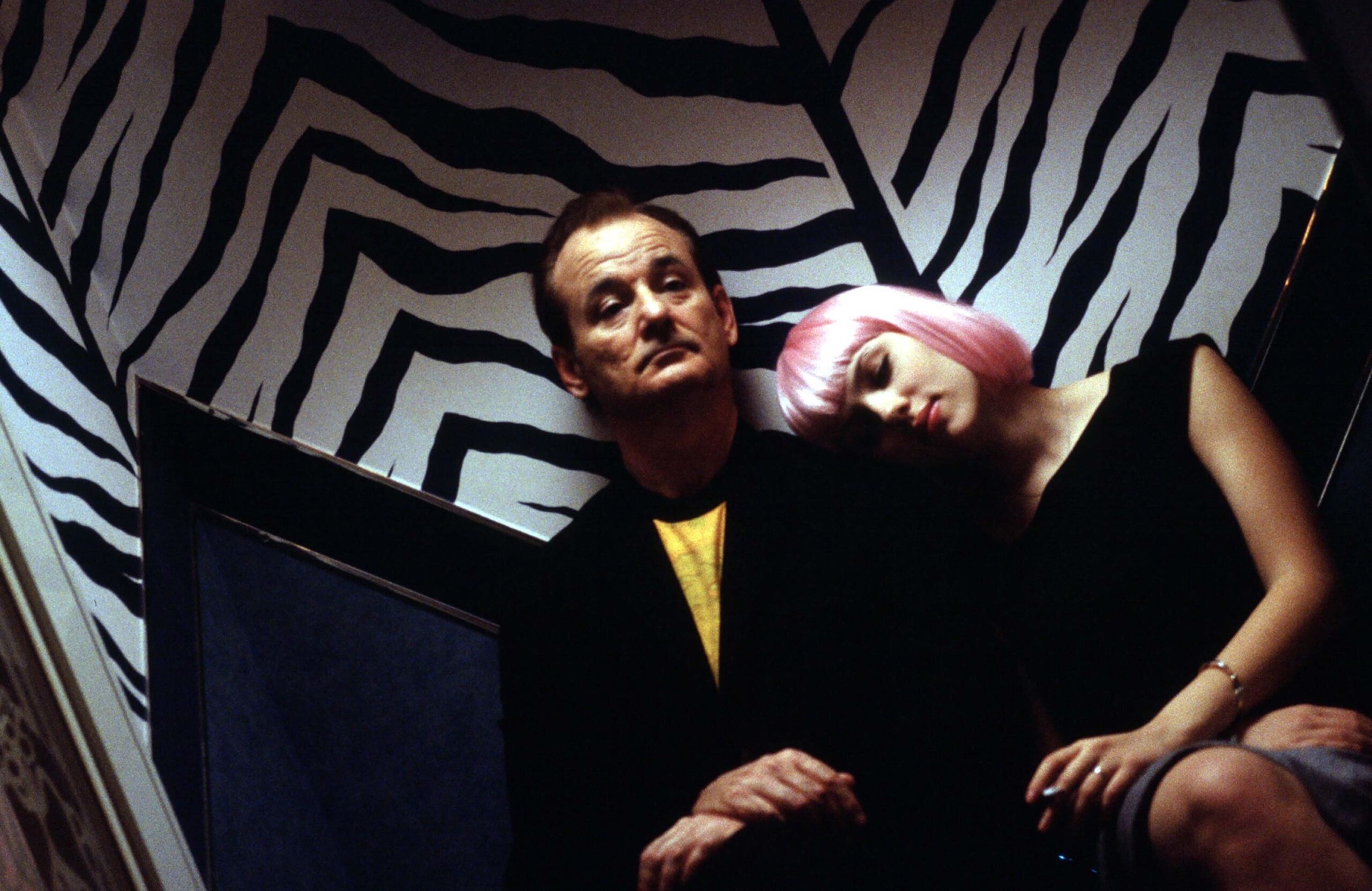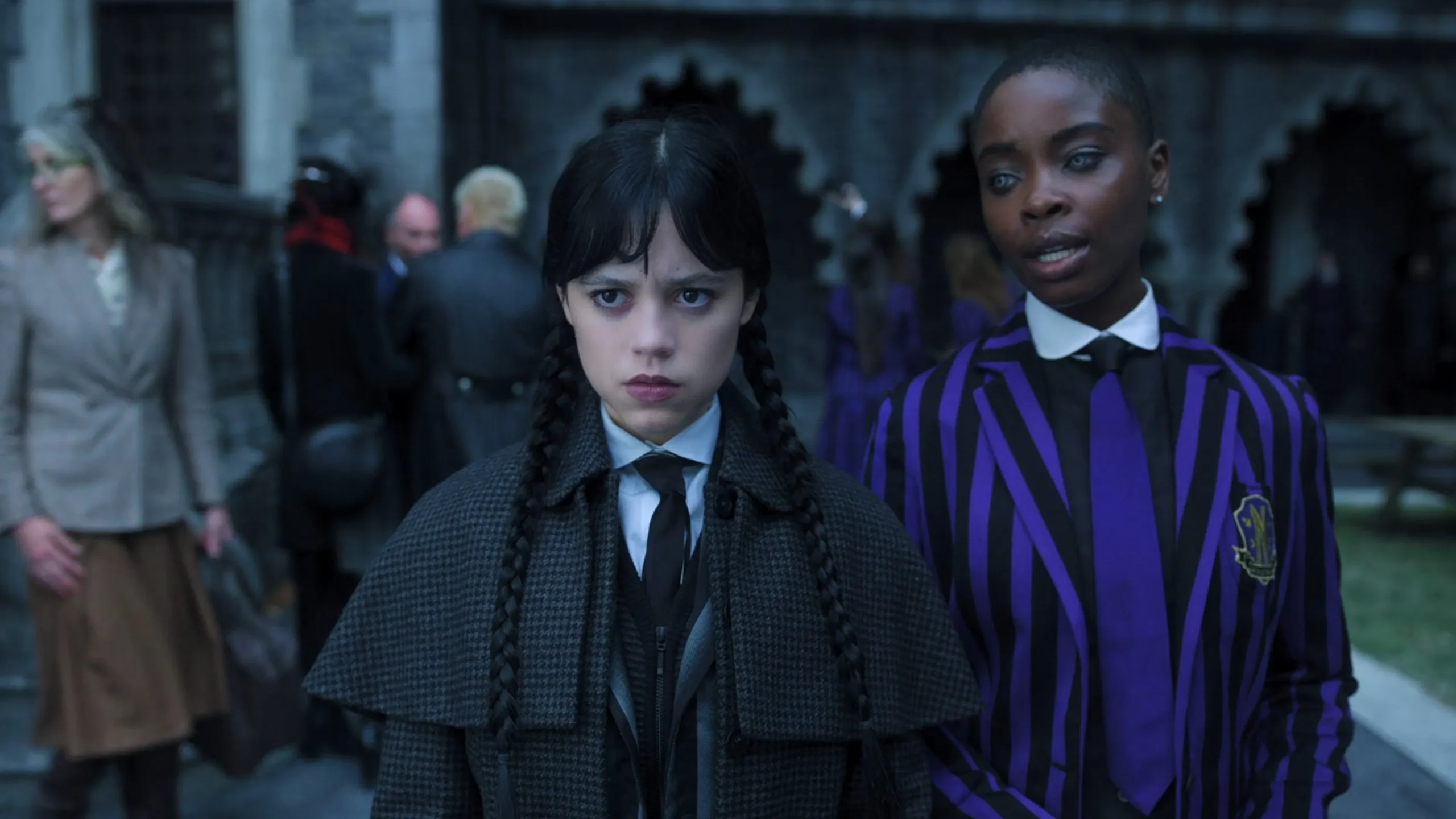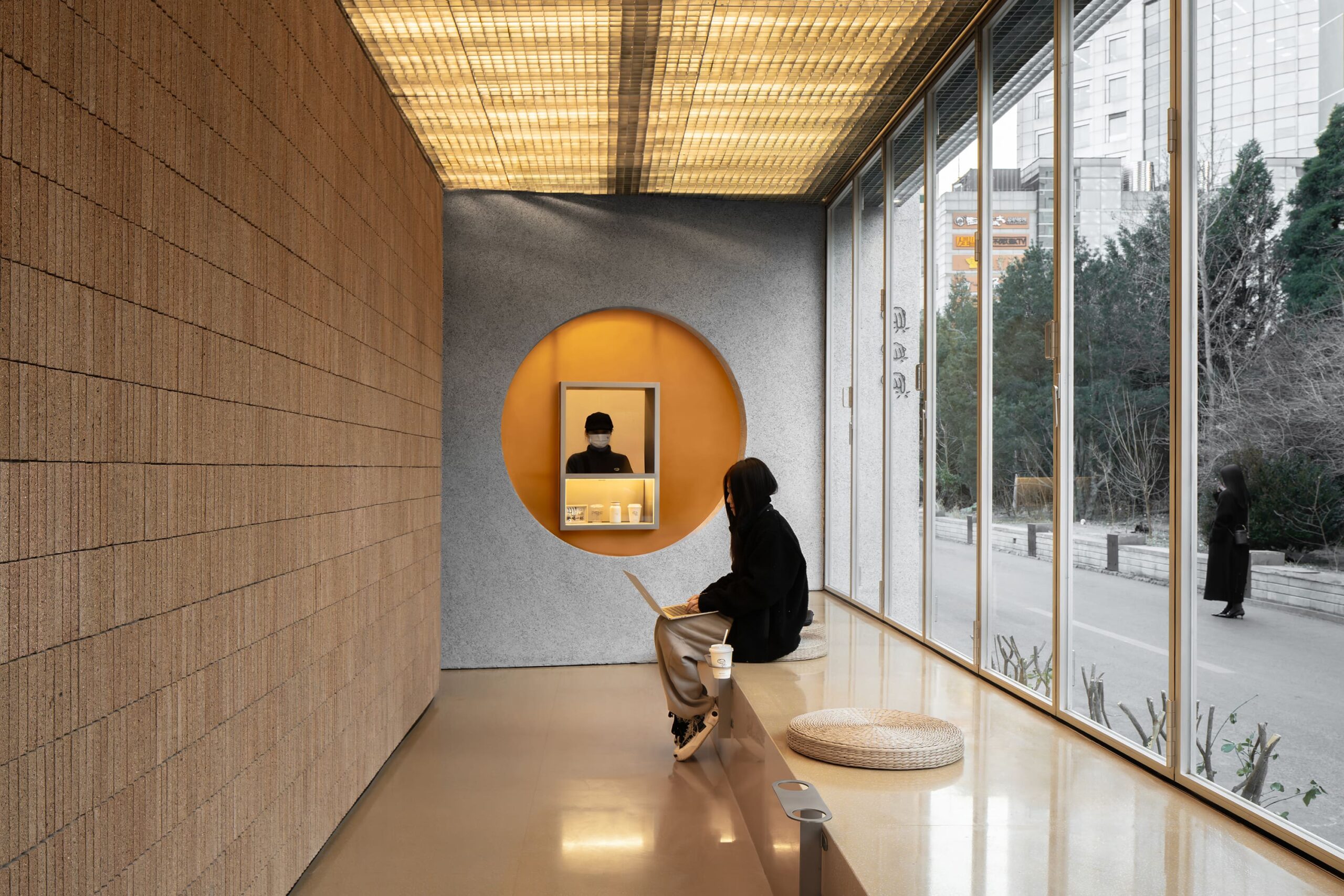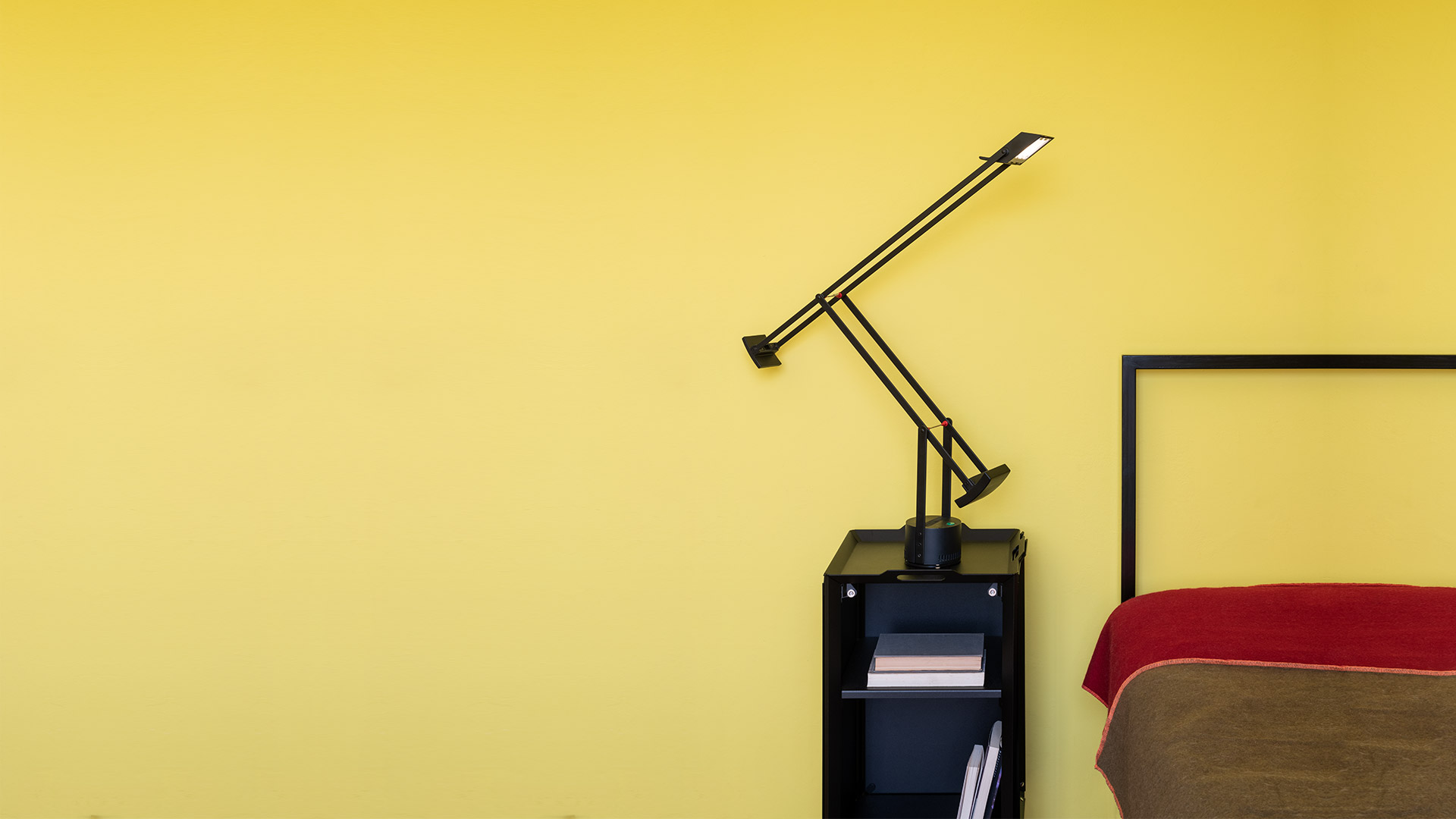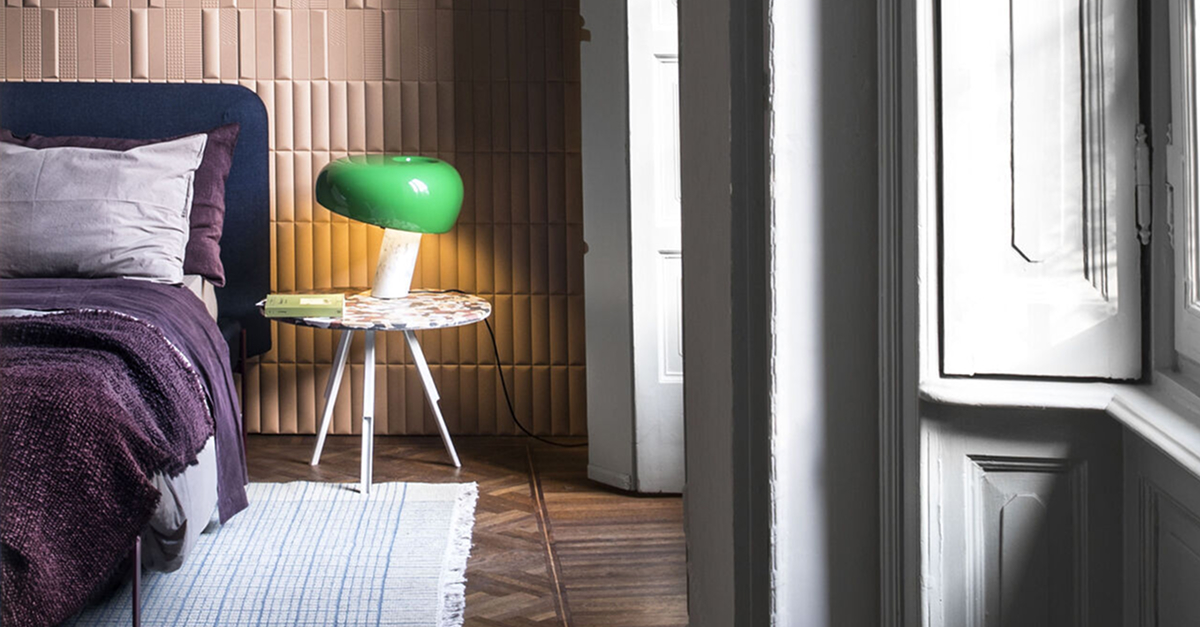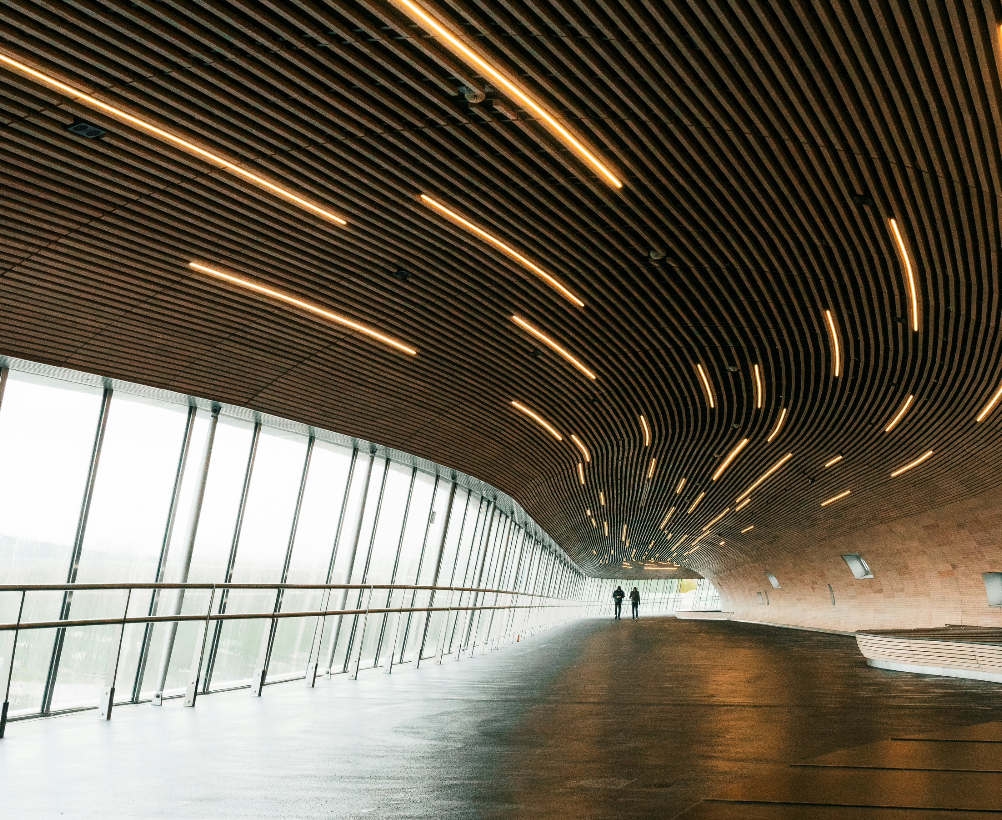After a year of research and design, the unveiling of the new artistic lighting at Trajan’s Market took place last June. The archaeological site at the foot of the Quirinal Hill, in the very heart of Rome and steps away from the Imperial Fora, now shines with a balanced, precise scheme that enhances the brick architecture and restores harmony within its historic surroundings.
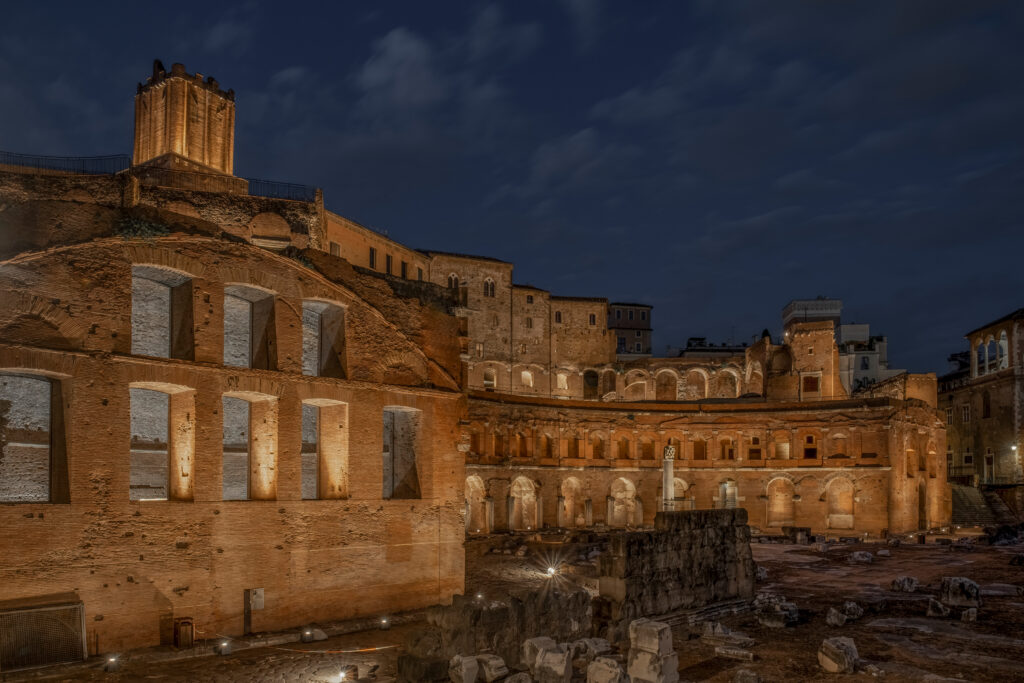
The project was led by Areti, part of the ACEA Group and responsible for public and artistic lighting in the capital, together with a team from the Department of Architecture at Roma Tre University and the Master’s in Lighting Design at Sapienza University of Rome. This collaboration, launched in 2019, has involved over 60 students and alumni from both institutions.
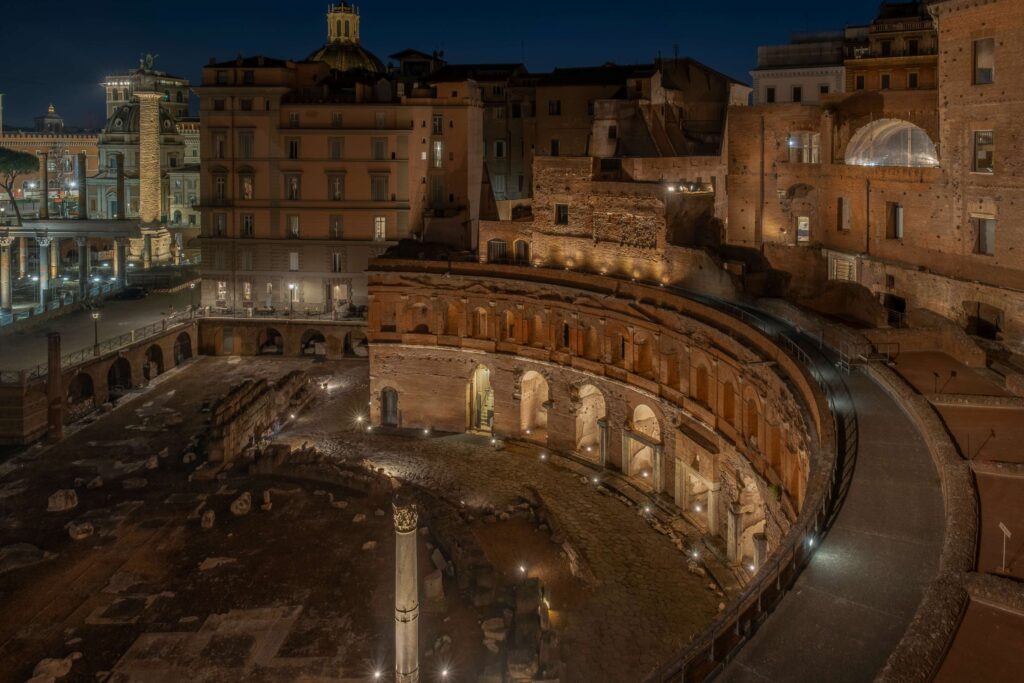
Two key goals: energy efficiency and site enhancement
The lighting renovation aims to highlight the architectural beauty of Trajan’s Market through a scenographic and cohesive approach. The intervention includes both projected light and grazing light, designed to accentuate the monument and provide a unified reading of the site within the cityscape. Due to the monument’s scale, the project considered various perspectives, but the human-height viewpoint from Via dei Fori Imperiali was prioritized. It is not only the most frequented by visitors but also offers the best comprehensive view of the entire complex.
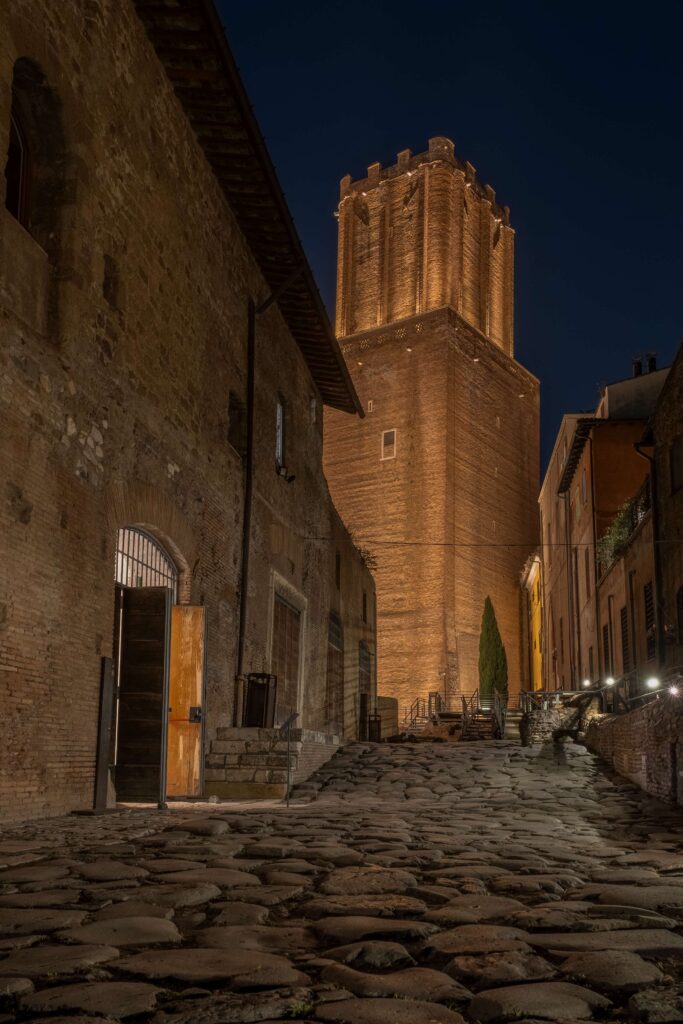
The lighting system has been completely redesigned, integrating previously dim or unlit areas. The 107 old fixtures were replaced by 259 new-generation LED projectors, ensuring improved energy performance. The new setup operates with a total power consumption of around 7.5 kW, compared to the former 11.5 kW, while an intelligent control system allows fine calibration of each light point, further optimizing energy savings.
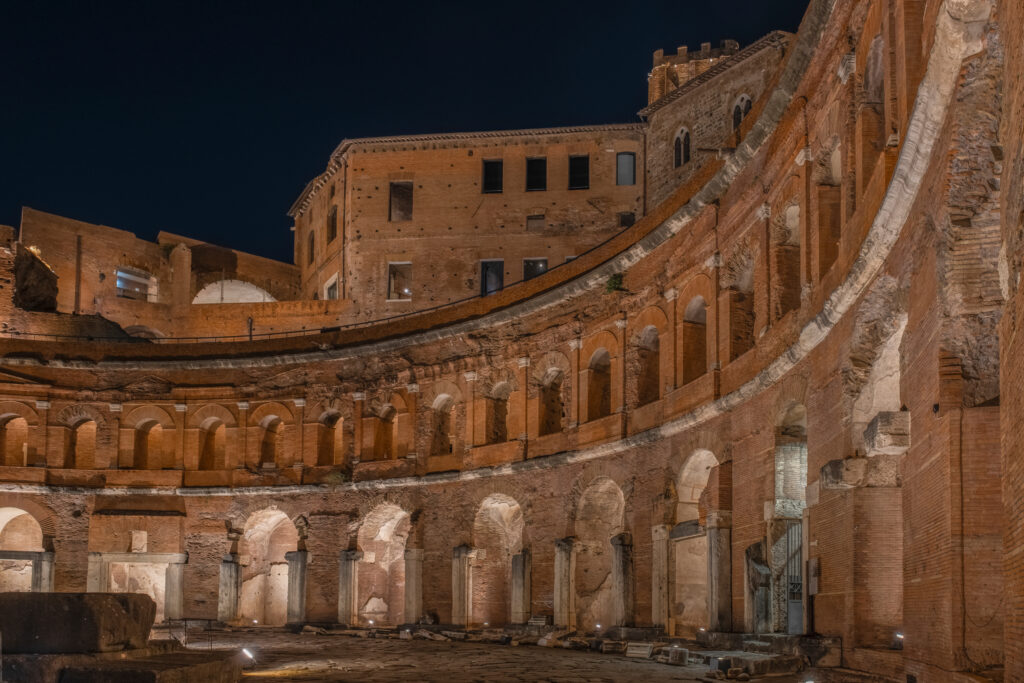
Technology and design in the new lighting system
All fixtures use a warm color temperature of 2700 Kelvin, ensuring continuity with the lighting already present on other brick Roman monuments. This creates a welcoming atmosphere that respects the site’s historical character. Innovative solutions include projected lighting for the exterior walls, delivering soft, even illumination across the various levels and offering a coherent perception of the site as a monumental urban backdrop. The Tower of the Militia, the niches, and the internal ambulatory have been emphasized using grazing light, which adds depth while preserving the architectural language.
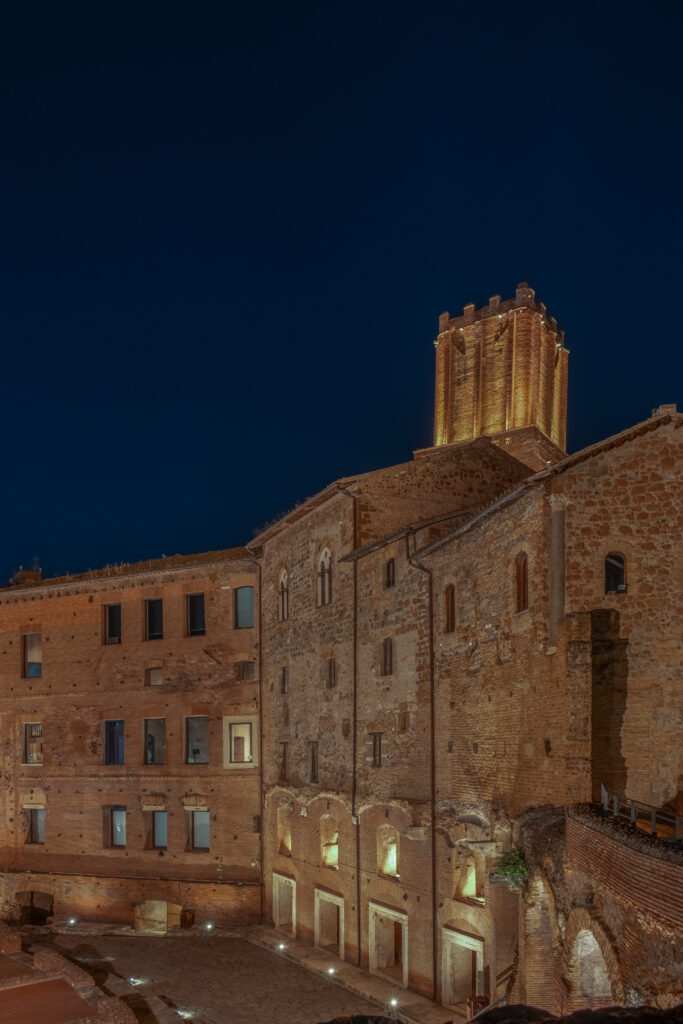
During the lighting presentation, Barbara Marinali, President of ACEA, stated: «It’s a privilege to care for a heritage that is unique in the world, and to do so by paying close attention to how lighting architecture can redefine these spaces. By adopting cutting-edge technology with high color rendering, we’ve managed to highlight the monument’s details and make it accessible to the world, even at night».
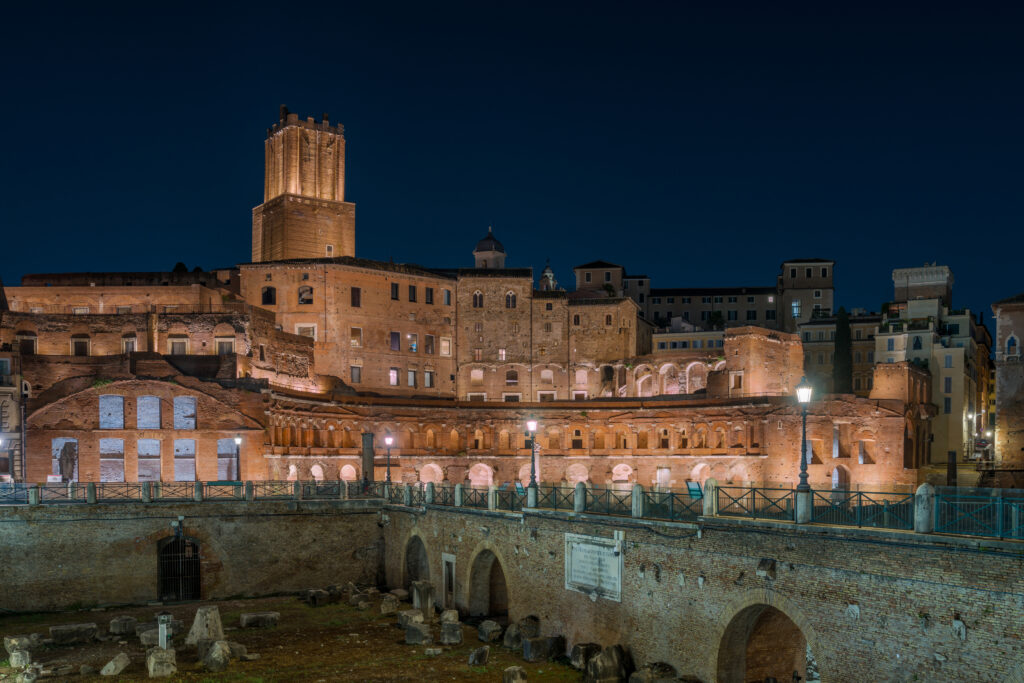
PROJECT CREDITS
Areti team
Viviana D’Agostini – Head of Public Lighting
Cristina Scudetti – Head of Design
Bruno Lalli – Head of Artistic Lighting
Pietro Aglieri – Works Manager
Luigi Agostini – Operations Director
Roma Tre – Sapienza team
Project Manager and Scientific Coordinator: Marco Frascarolo
Operational Coordination: Maria Elena Cannata
Designers: Maria Fernanda Pellecer, Matteo Mucciante, Francesca Duca
